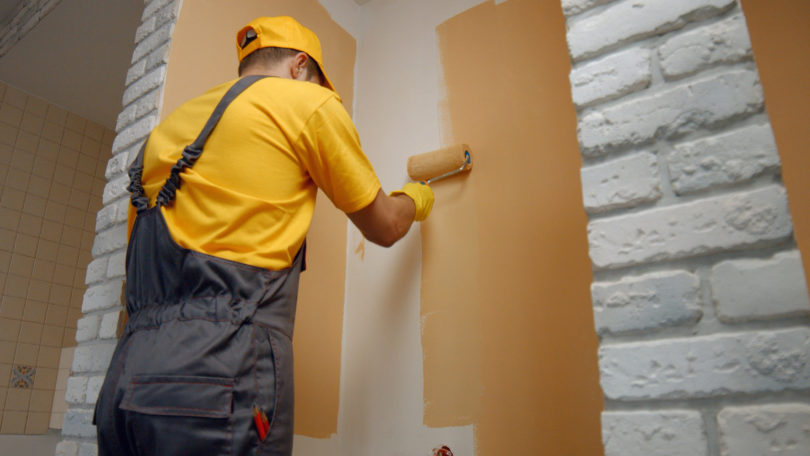The outlook of your business space can play a significant role in projecting a strong reputation for your business. But before jumping in and giving your business premises a new coat of paint, keep in mind that this work will redefine your business environment. Its curb appeal will leave a strong impression on your clients and employees.
As such, it’s worth paying close attention when you choose to paint your commercial premises; doing so will contribute to achieving a satisfactory and seamless outcome. So, in this comprehensive guide, we will walk you through the essential steps for how to prepare your commercial space for a painting project that goes beyond your expectations.
Assess your painting needs: Define your vision
Having a clear vision about your painting project is the most crucial aspect when it comes to painting your business property. While commercial painting projects may seem fun, these jobs are best left to professional commercial painters.
Whether it’s a complete interior overhaul, accent walls, or strategic touch-ups, understanding the scope of your project sets the stage for effective pre-planning.
Before getting into the process of painting preparation work, first identify the highly busy zones, customer areas, and the overall thematic goals you aim to achieve. This initial assessment lays the foundation for a successful painting project that aligns with your business objectives.
That, in turn, can help build a strong employer brand, which is necessary for recruitment marketing. CareerArc’s research suggests that when active jobseekers like your employer brand, you have the potential to attract and retain as much as 84 per cent of them.
Painting budget: Financial framework for success
Following the above step, you can get an overview of how much surface area you need to paint. This will help you to set an estimated painting cost according to the area. Research the average cost of commercial painting projects, taking into account factors such as the size of your space, the type of paint required, and any additional services you may need.
Establishing a clear budget not only streamlines decision-making throughout the project but also ensures that your vision aligns with your financial realities. This proactive approach allows for a smoother and more transparent collaboration with your chosen painting professionals.
Choosing your colours: Crafting the theme for your business property
Colours play a vital role in creating a streamlined environment for your commercial property. Colour choice has the ability to influence your mood and increase productivity in your business. If you are unsure which colours will be most suitable for your property, consider engaging a colour specialist to create a colour scheme that not only resonates with your audience but also reflects the values of your business.
Colour can also play a role in projecting a positive vibe in your business space. As per colour psychology, choosing the right combination of colours can boost productivity and create a positive atmosphere. For example, you may pick pleasant and peaceful colours for meeting areas or waiting areas. Conversely, use vibrant or neutral shades in your production area. Choosing the right colour scheme can contribute significantly to the overall success of your painting project.
Choose your painter carefully
As with any profession, not all painters are created equal, so it’s worth taking the time to speak with several painting business owners before committing to one.
You may find lots of commercial painters near you, so take your time and pick a commercial painter who has a proven track record in commercial painting work and who fits your painting budget. Dive into reviews, seek referrals from trusted sources, and request quotes from multiple painters to compare services and pricing.
A collaborative partnership with the right painting professional ensures a smoother execution and increases the overall quality of your painting project.
Clearing and protecting your assets, furniture, and equipment
Once you choose your commercial painter, the next step is to safeguard your assets from unwanted paint splashes or spills. Paint can also damage expensive office equipment, so use caution when painting. Cover your property and inportant assets with plastic sheets or cloths.
Pay close attention to delicate items and electronics, either by removing them from the space or securin them in storage. This precautionary step will prevent accidental spills or splatters, preserve the integrity of your assets, and allow painters to work with precision and ease.
Surface reparation: Building a solid foundation
A smooth surface is key to achieving a flawless finish in painting. So repairing rough surfaces before painting is critical. This includes repairing patches, cracks, holes, or uneven surfaces. Investing time in surface preparation contributes to the longevity of your paint job and helps create a professional and lasting impression for your commercial space.
Pressure cleaning: The canvas matters
A clean surface is essential for getting the best paint finish. Remove dust, dirt, and grease using a mild detergent or cleaner. For stubborn stains, consider using a stain-blocking primer to ensure a clean and uniform finish.
Allow the surfaces to dry completely before the painting process begins. A meticulously cleaned surface sets the stage for a transformation that is not only visually appealing but also durable over time.
Masking and taping: Efficiency in a single stroke
Commercial spaces typically have many areas that need marking work, such as parking areas, warehouse areas and other amenities. So achieving neat and clean lines and great visibility is very important. Use painter’ss tape to mask off areas that should not be painted, including edges, trim, and fixtures. Be sure to apply the tape evenly and securely to prevent bleeding or uneven lines during the painting process.
The precision achieved through masking and taping elevates the overall aesthetic of the project, showcasing attention to detail and a commitment to quality.
Communicating with stakeholders: Transparency is key
Throughout the painting process, maintain open communication with all relevant stakeholders. This includes employees, clients, and anyone else who may be affected by the changes.
Clearly communicate the timeline, expected disruptions, and any temporary adjustments that may be necessary during the painting process. Also, discuss the job with your commercial painters and schedule painting work in a way that that disrupts your business as little as possible.
Does your business need a new coat of paint?
This comprehensive painting guide can be used as a road map to success as you set out to prepare your commercial space for painting. Every stage of the process is a brushstroke that adds to the masterpiece that is your renovated commercial space.







